They say a change is as good as a rest. Father and son duo Gerard and John Dullea might argue as to whether or not their 35 suckler cows provide them with a rest at the weekend, but they would probably agree that the herd is a welcome change after their working week.
Gerard is a builder and works on both agricultural buildings and dwelling houses. His son John, 24, is in the second year of a graduate programme with Dovea Genetics.

Gerard and Ann Dullea. \ Donal O' Leary
Prior to that, he spent six months working on a 1,100-cow dairy herd in New Zealand following completion of the four-year Agricultural Science degree in Waterford IT.
“I suppose I had a break for the summer after finishing college and I had heard about farming in New Zealand and I wanted to see it for myself,” explained John.
I just wouldn’t like to go dairying
He and his girlfriend landed on the farm two weeks out from calving. “Looking back, it was a great time to be out there. I got to see a bit of everything,” he says.
Asked whether or not he considered putting is new-found dairy skills into practice on the 28ha home farm in Courtmacsherry Bay in Cork, John said not.
We are not tied down to the sucklers
“I just wouldn’t like to go dairying,” he explained. “I love working in the agri industry and the sucklers tie-in very well with part-time work.
“We are not tied down to the sucklers the same way we would be with dairy cows,” he added. On top of that, the pair have a passion for beef breeding.
“After erecting the first shed in 1988, Gerard quickly got into around 20 suckler cows. At the time, the breeding within the herd was very much Angus-based and progeny were sold as weanlings.
Fast forward
Fast forward to now, the herd comprises mainly Limousin-cross and Simmental-cross cows. John says the pair are happy with the herd, but are still keen to keep improving.
“Going forward, we will probably use more Limousin,” he explains.
“We find the Limousin cow acts as an all-rounder, I suppose. She has good calving ability, nice shape and conformation and she stays in the herd for a good number of years.”
John also pointed out that the Limousin-cross cow is a versatile one and, should the need ever arise to change system, she will suit most.
Between prices, weight limits and then the whole technical side of it, it seems to have gone up another level again
As things stand, the Dulleas are running an under-16-month bull beef system.
“We got into it about four or five years ago and it was working well up until about two years ago,” John says. “Between prices, weight limits and then the whole technical side of it, it seems to have gone up another level again.”
For now, the pair will stick with bull beef as their main enterprise, but a weanling system might suit their part-time work better in the future. With a versatile, Limousin cow type, they feel they are prepared for such an eventuality.
In a new venture, John is also going to try-out a Belgian Blue bull
Another ace in their pack is the fact they use 100% AI. “We see it gives us the chance to pick specific bulls for specific cows and we can be more sure of calving difficulty, especially for the heifers,” John says.

John Dullea.
Currently, the bulls of choice are Ewdenvale Ivor (LM2014) for maiden heifers and Cavelands Jolly (LM2395) and Knockmoyle10 Loki (CH4159) for more mature cows. In a new venture, John is also going to try-out a Belgian Blue bull, 3033 Du Grand Bon Dieu (BB2247), on mature cows, which he feels might open up more doors to live selling.
What we have noticed most is the way it has helped us to tighten up the calving season
Breeding this year began on 9 April to target a late-January start to calving. So far, 24 cows have been served and, according to John, the MooCall heat collar has transformed the Dullea breeding season.
“It worked unbelievably well last year,” he explains. “What we have noticed most is the way it has helped us to tighten up the calving season. Two or three years ago we were calving for three months. This year we calved for nine weeks.”
Definite benefit
Keen to keep driving the farm forward, John has introduced grass measuring to the weekly job list.
“I’m using the cut and weigh method. We have a cover of around 880kg DM/ha at the minute,” he says. And while John admits the new approach might have been met with mixed reactions by his father, he is certainly seeing the benefits now.
I think this farm can feed 40 cows but I’d have to grow more grass and be able to make more silage first
“We started measuring for two reasons; to see how much grass we were growing and to enable us to grow more grass,” he explains. “My idea is to identify our worst-performing paddocks and reseed them. Even already I’m noticing a few places that aren’t growing nearly the same as other parts.”

Gerard Dullea. \ Donal O' Leary
The end goal is to grow more grass to feed more cows. “I think this farm can feed 40 cows but I’d have to grow more grass and be able to make more silage first,” he explains.
Asked about the future for the farm, John’s answer was quite simple – improve the quality of the cows and improve the grass.
There are so many businesses depending on the suckler cow
That’s an internal view though, and he admits that perhaps the wider mood among suckler farmers is less optimistic.
“There is a very negative view on the suckler cow at the minute,” he says. “But the way I see it, between factories and marts and all the various inputs, there are so many businesses depending on the suckler cow. If she goes, they will all take a huge hit.”
On top of that, John says “the suckler cow can still be a very efficient animal. It’s up to each farmer to try and make her that way.”
Gerard and John Dullea.Courtmacsherry Bay, Co Cork.Both part-time farming.35 suckler cows, Limousin – and Simmental-cross.Calving in February and March to 100% AI sires.Started grass measuring in 2020.
They say a change is as good as a rest. Father and son duo Gerard and John Dullea might argue as to whether or not their 35 suckler cows provide them with a rest at the weekend, but they would probably agree that the herd is a welcome change after their working week.
Gerard is a builder and works on both agricultural buildings and dwelling houses. His son John, 24, is in the second year of a graduate programme with Dovea Genetics.

Gerard and Ann Dullea. \ Donal O' Leary
Prior to that, he spent six months working on a 1,100-cow dairy herd in New Zealand following completion of the four-year Agricultural Science degree in Waterford IT.
“I suppose I had a break for the summer after finishing college and I had heard about farming in New Zealand and I wanted to see it for myself,” explained John.
I just wouldn’t like to go dairying
He and his girlfriend landed on the farm two weeks out from calving. “Looking back, it was a great time to be out there. I got to see a bit of everything,” he says.
Asked whether or not he considered putting is new-found dairy skills into practice on the 28ha home farm in Courtmacsherry Bay in Cork, John said not.
We are not tied down to the sucklers
“I just wouldn’t like to go dairying,” he explained. “I love working in the agri industry and the sucklers tie-in very well with part-time work.
“We are not tied down to the sucklers the same way we would be with dairy cows,” he added. On top of that, the pair have a passion for beef breeding.
“After erecting the first shed in 1988, Gerard quickly got into around 20 suckler cows. At the time, the breeding within the herd was very much Angus-based and progeny were sold as weanlings.
Fast forward
Fast forward to now, the herd comprises mainly Limousin-cross and Simmental-cross cows. John says the pair are happy with the herd, but are still keen to keep improving.
“Going forward, we will probably use more Limousin,” he explains.
“We find the Limousin cow acts as an all-rounder, I suppose. She has good calving ability, nice shape and conformation and she stays in the herd for a good number of years.”
John also pointed out that the Limousin-cross cow is a versatile one and, should the need ever arise to change system, she will suit most.
Between prices, weight limits and then the whole technical side of it, it seems to have gone up another level again
As things stand, the Dulleas are running an under-16-month bull beef system.
“We got into it about four or five years ago and it was working well up until about two years ago,” John says. “Between prices, weight limits and then the whole technical side of it, it seems to have gone up another level again.”
For now, the pair will stick with bull beef as their main enterprise, but a weanling system might suit their part-time work better in the future. With a versatile, Limousin cow type, they feel they are prepared for such an eventuality.
In a new venture, John is also going to try-out a Belgian Blue bull
Another ace in their pack is the fact they use 100% AI. “We see it gives us the chance to pick specific bulls for specific cows and we can be more sure of calving difficulty, especially for the heifers,” John says.

John Dullea.
Currently, the bulls of choice are Ewdenvale Ivor (LM2014) for maiden heifers and Cavelands Jolly (LM2395) and Knockmoyle10 Loki (CH4159) for more mature cows. In a new venture, John is also going to try-out a Belgian Blue bull, 3033 Du Grand Bon Dieu (BB2247), on mature cows, which he feels might open up more doors to live selling.
What we have noticed most is the way it has helped us to tighten up the calving season
Breeding this year began on 9 April to target a late-January start to calving. So far, 24 cows have been served and, according to John, the MooCall heat collar has transformed the Dullea breeding season.
“It worked unbelievably well last year,” he explains. “What we have noticed most is the way it has helped us to tighten up the calving season. Two or three years ago we were calving for three months. This year we calved for nine weeks.”
Definite benefit
Keen to keep driving the farm forward, John has introduced grass measuring to the weekly job list.
“I’m using the cut and weigh method. We have a cover of around 880kg DM/ha at the minute,” he says. And while John admits the new approach might have been met with mixed reactions by his father, he is certainly seeing the benefits now.
I think this farm can feed 40 cows but I’d have to grow more grass and be able to make more silage first
“We started measuring for two reasons; to see how much grass we were growing and to enable us to grow more grass,” he explains. “My idea is to identify our worst-performing paddocks and reseed them. Even already I’m noticing a few places that aren’t growing nearly the same as other parts.”

Gerard Dullea. \ Donal O' Leary
The end goal is to grow more grass to feed more cows. “I think this farm can feed 40 cows but I’d have to grow more grass and be able to make more silage first,” he explains.
Asked about the future for the farm, John’s answer was quite simple – improve the quality of the cows and improve the grass.
There are so many businesses depending on the suckler cow
That’s an internal view though, and he admits that perhaps the wider mood among suckler farmers is less optimistic.
“There is a very negative view on the suckler cow at the minute,” he says. “But the way I see it, between factories and marts and all the various inputs, there are so many businesses depending on the suckler cow. If she goes, they will all take a huge hit.”
On top of that, John says “the suckler cow can still be a very efficient animal. It’s up to each farmer to try and make her that way.”
Gerard and John Dullea.Courtmacsherry Bay, Co Cork.Both part-time farming.35 suckler cows, Limousin – and Simmental-cross.Calving in February and March to 100% AI sires.Started grass measuring in 2020. 






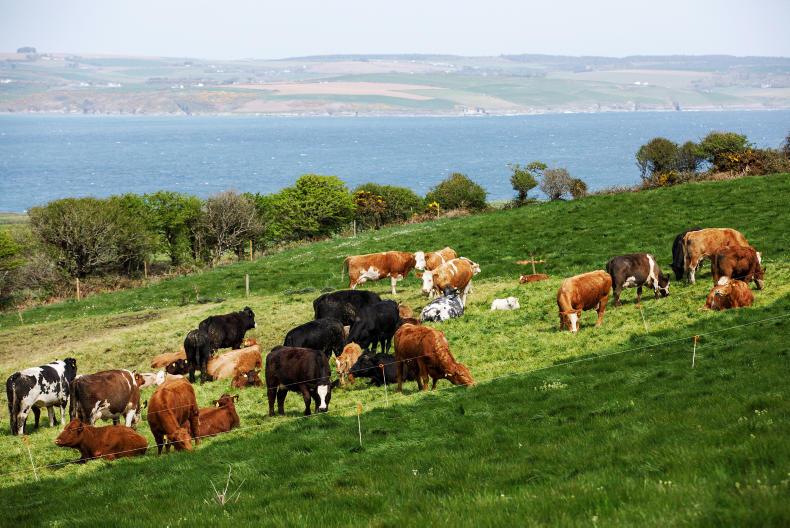
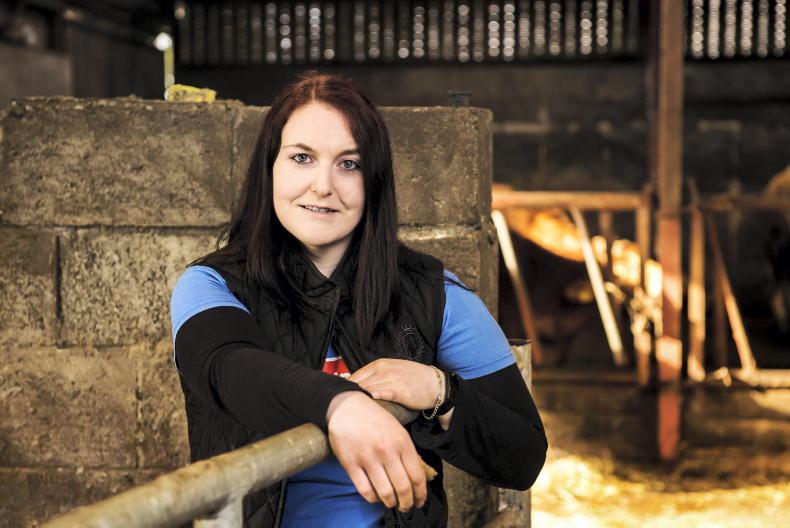

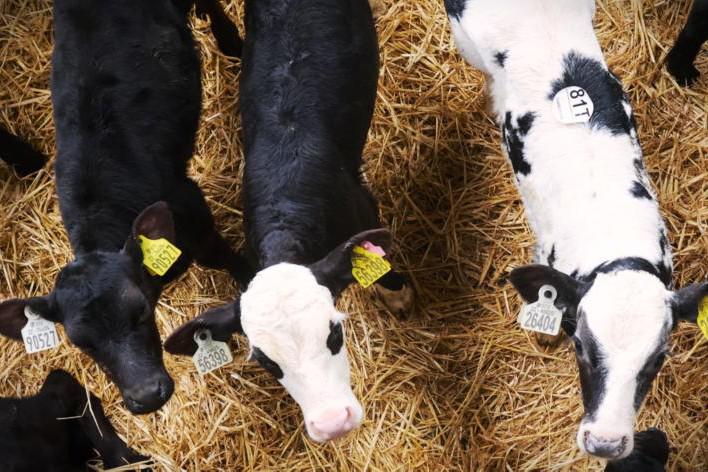
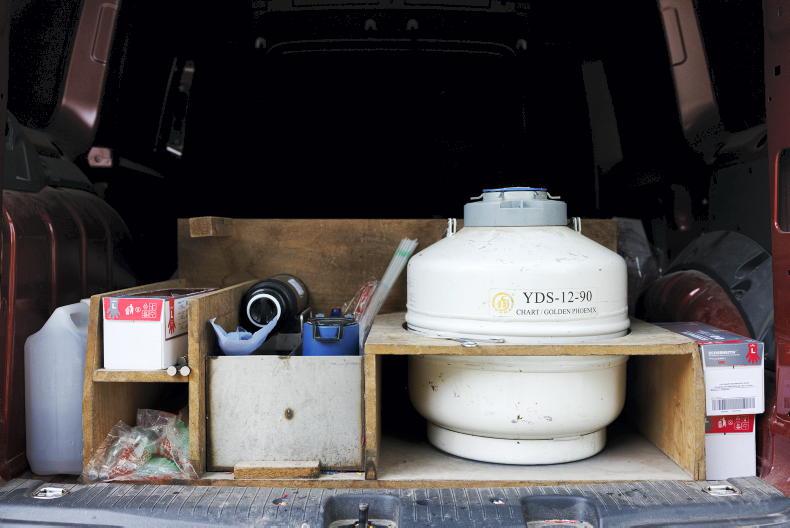
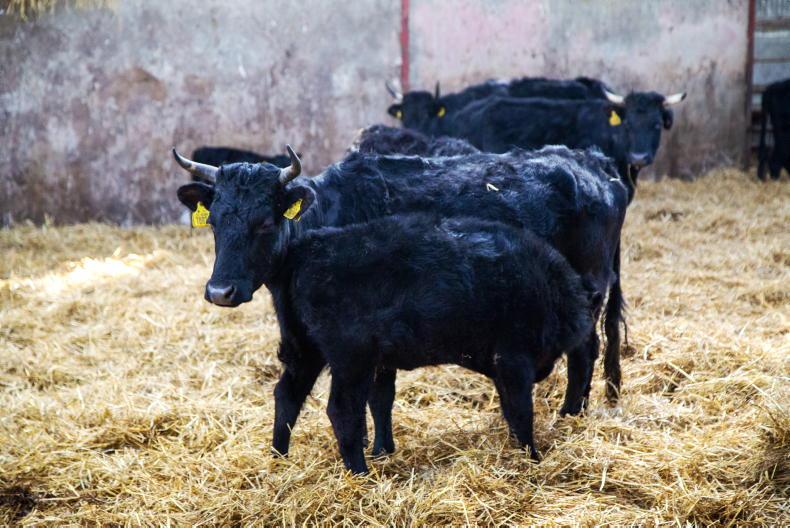
SHARING OPTIONS